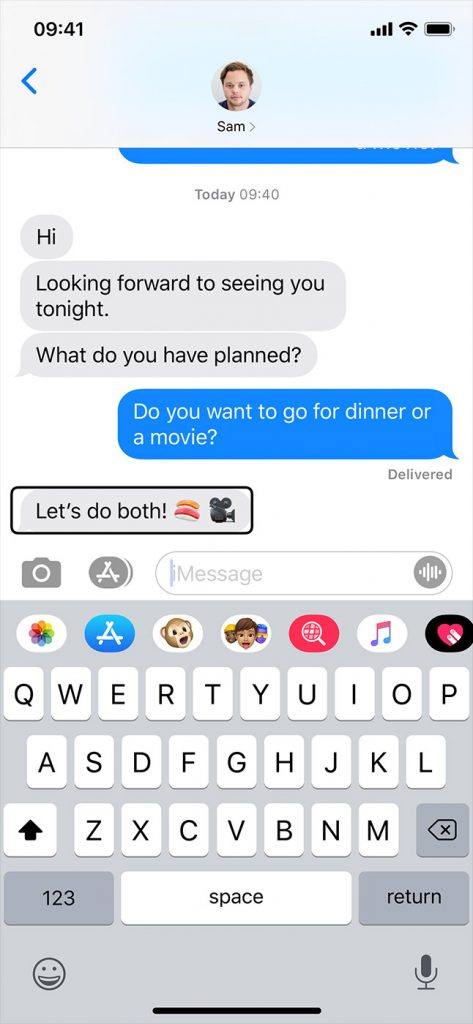Technology to help the visually impaired is a topic that should be on everyone’s radar. Especially if you know of someone, or are yourself visually impaired.
Assistive Technology is defined as being adaptive, rehabilitative and dependable for people with a disability.
Some of these devices are specifically designed with Visual Impairment in mind and have accessibility built in, others are from specialist manufacturers and suppliers.
This blog article will help you to understand the basics, keep you up-to-date and build on your tech know-how.
Assistive Technology is evolving, from smart home speakers to screen readers there is now a vast array of devices on the market. Understanding what helpful new technology is available can be daunting.
We’ve had a look at the Best Technology available for people who have a Visual Disability. Read more below.
What does Visually Impaired mean?
Visual impairment, also known as vision impairment or vision loss, is a decreased ability to see to a degree that causes problems not fixable by usual means, such as glasses. Some also include those who have a decreased ability to see because they do not have access to glasses or contact lenses.
Wikipedia
How New Technology Is Helping Blind And Visually Impaired People
The estimated number of visually impaired people in the world is 285 million, all of these people could have their lives improved by technology.
Let’s take a look at what new tech is available and how it can help.
Smartphone Apps
Smartphones are getting smarter. BeMyEyes is a free app that helps connect blind and low-vision people with volunteers who don’t have a visual impairment for visual assistance through video chat.
The idea is that the volunteer takes a call and is able to describe things for the user. For example, which tin of soup is the vegetable one. It’s a simple idea but it’s used by over 180,000 people and has over 3 million volunteers.
You can find out more about BeMyEyes on their website here https://www.bemyeyes.com/
Smartphone Accessibility
There’s a fantastic feature in iOS called VoiceOver.
VoiceOver is a touch-based screen reader that lets you hear what’s going on, on the screen.
Once you enable VoiceOver in the settings you just need to triple click the home button to access it wherever you are in iOS. You’ll then hear a description of everything that’s happening on your iPhone screen.
You can get details of how much battery percentage you have left or who’s calling you. The VoiceOver feature allows you to change talking speed, pitch and volume.

Braille Tablet
Whilst doing my research for this article I’d never even considered that this could be in development. As a tech enthusiast, thinking of the technology behind a tablet that can make braille dots rise and fall on it’s screen is mind blowing.
BLITAB is a braille tablet that uses actuating technology developed by their in house technicians. It creates text and graphics in real time. It’s tactile, meaning you can feel it create the braille in real time.
The applications for this fantastic invention are obvious. For example, not all books are available in audio format. For those of you who can read braille BLITAB will allow you to read any book you like!
It also allows blind users access to a portable device designed specifically to read any document.
Check their website for more details: https://blitab.com/
Technology to help the visually impaired – Adaptations
There are also software companies developing products for making employment more accessible. One of the more well known products is JAWS.
JAWS or Job Access With Speech is a computer screen reader program for Windows that allows visually impaired users to read the screen either with a text-to-speech interface or by a braile display.
JAWS is developed by the team over at the Blind and Low Vision Group. It was originally released in 1989, originally for MS-DOS by Ted Henter. Ted was a former motorbike racer who lost his sight in 1978 due to a car accident.
As with all technology and feature heavy software JAWS can be quite complicated to get used to. You’ll need specific training to enable you to get the most out of it.
It’s also used by website design professionals to help with accessibility testing.
You can find more about JAWS over on their website. https://www.freedomscientific.com/products/software/jaws/

An Interview with Haseeb Ahmad
Haseeb Ahmad started to lose his sight at 10 years old. He knew his eyesight wasn’t normal, but the medical profession failed to diagnose the degenerative eye disease which left him completely blind by the age of 20.
Now a World Record holding athlete and author, we’ve asked Haseeb Ahmad to answer some questions to help us understand how technology helps him day to day.

Do you think technology has enabled Visually impaired people to be more independent?
“Yes.”
What technology do you use in your day to day or work life that is specifically designed for use by the visually impaired?
“JAWS for windows, VoiceOver on my iPhone and an app called Soundscape which helps me when I am out and about.”
Do you have a wish list of tech you’d like to be made more accessible to people with a visual impairment?
“I think that any technology which describes photographs more accurately would be amazing. I’m also really looking forward to the driverless car becoming widely available.”
Is there anything you wouldn’t be able to do without the use of technology?
“Well, quite frankly I would struggle to do my job. I would also struggle to access anything on my phone and, there is a massive amount I can access just through my mobile device.”
Haseeb’s Blog
You can read more about Haseeb and his journey through life and sport over on his blog! It’s well worth a read. Check it out by clicking here.
More Tech
If you enjoyed reading our technology to help the visually impaired article, check out our tech category page for more.







